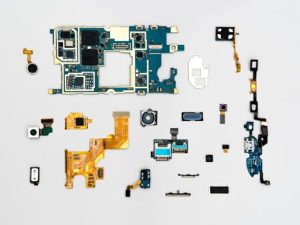The Office Market Revival: Downtowns Bounce Back
For months, the sight of empty downtown office buildings has been a haunting reminder of the pandemic’s devastating impact on the global workforce. City centers that were once bustling with employees, commuters, and tourists were suddenly deserted as companies shifted to remote work and individuals stayed home. However, as vaccine distribution ramped up and restrictions loosened, the office market has recently seen a promising revival. Downtowns are bouncing back, and it’s a trend that has many experts and investors eager to explore the future of office space.
The Impact of the Pandemic on the Office Market
The sudden shift to remote work caused by Covid-19 had a significant impact on the demand for office space. With companies forced to close their physical offices and send employees home, the need for leases in downtown areas decreased significantly. This drop in demand resulted in a record-high vacancy rate of 17.1% in the top 10 U.S. office markets in 2020, according to data from CBRE Group Inc.
As a result, landlords and property owners faced challenges in finding new tenants and collecting rent, leading to decreased market values and an uncertain future for the commercial real estate industry. With remote work proving to be a viable option for many companies, experts predicted that the office market would continue to struggle even after the pandemic was over.
The Return of the Workplace
However, as more and more individuals receive their Covid-19 vaccinations, companies have begun to plan their return to the workplace. While remote work may remain a permanent option for some, businesses have found that the lack of face-to-face interaction and collaboration has taken a toll on productivity and company culture. As a result, many are eager to bring their employees back to the office, with some even seeking to increase their office space to accommodate for social distancing measures.
The Appeal of Downtown Offices
One of the main factors contributing to the revival of downtown office markets is the appeal of these locations to both employees and companies. Downtown areas are often at the heart of city life with access to public transportation, amenities, and vibrant communities. With remote work becoming a more significant part of people’s lives, there has also been a growing desire for physical human interaction and social connections, which downtown office locations can provide.
Furthermore, there is a growing understanding that the office is more than just a place to work; it is a space for collaboration, innovation, and professional growth. While remote work has its benefits, many companies are realizing the value of having their employees work in a physical office, where creativity and team dynamics can thrive.
The Future of Office Spaces
As we move towards a post-pandemic world, it’s clear that the office market will never be the same. While remote work will continue to be an option for many, it’s unlikely that it will fully replace the traditional office setting. Companies are now looking for a hybrid model, where employees can work both remotely and in the office. This shift will undoubtedly impact the design and use of office spaces, with a greater focus on creating collaborative and flexible environments.
Additionally, the past year has highlighted the need for more flexibility in lease agreements. Many businesses have struggled with leases that are too long or rigid, leading to an increased demand for shorter-term and more flexible options. This trend is expected to continue as companies seek to navigate the uncertainties of the future.
The Bottom Line
While the pandemic has undoubtedly caused significant challenges in the office market, the recent revival of downtowns is a promising sign. As companies and employees recognize the value of the workplace and return to the office, there is renewed hope for the future of the office market. With a growing demand for more flexible and collaborative office spaces, the industry will undoubtedly see a shift in its traditional models, but one thing is for sure – the office is far from dead.
It’s clear that the events of the past year have reshaped the way we view and utilize office spaces. Still, as we adapt to the future, it’s crucial not to underestimate the power of physical offices in fostering creativity, innovation, and human connections. Downtowns may have taken a hit during the pandemic, but as they bounce back, we can look forward to a thriving office market with a new focus on flexibility, collaboration, and community.









